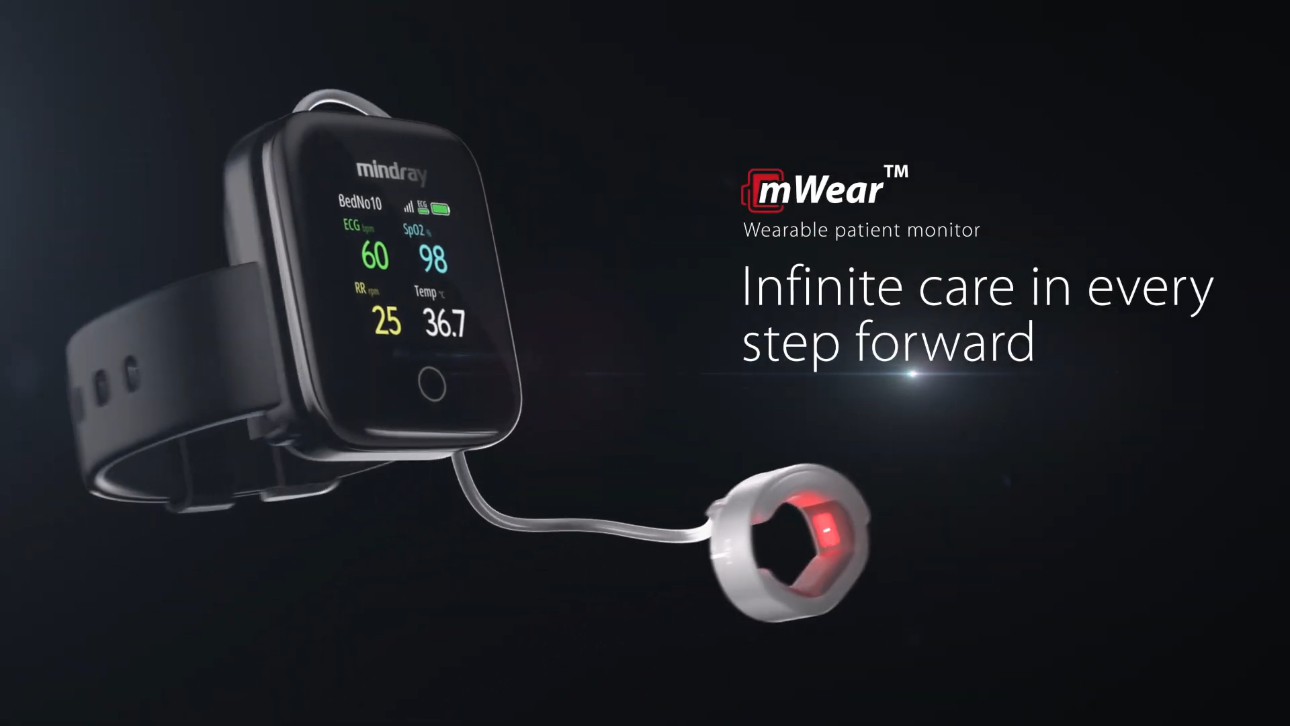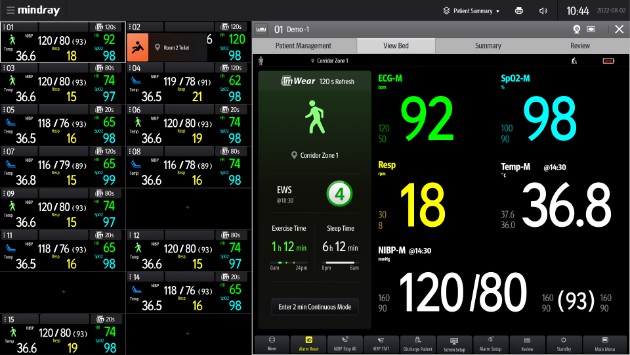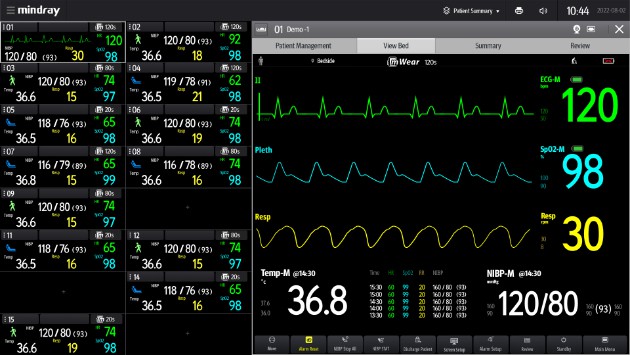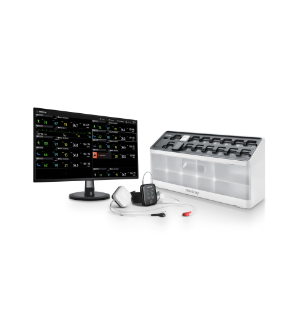Safeguarding every move with high-precision monitoring
Wireless wearable technology provides a more flexible way to continuously monitor patients in general wards. However, the device size limitations raise concerns about whether the device can measure physiological parameters comprehensively and accurately. With a modular design in complete wireless interconnection, mWear™ can measure the most comprehensive collection of vital signs, including ECG, oxygen saturation, noninvasive blood pressure, respiration rate, pulse rate, and temperature. Backed by years of technical expertise in medical-grade monitoring, Mindray’s patient monitoring devices ensure high-precision acquisition and transmission of physiological signals. Notably, mWear™ uses a ring sensor instead of the traditional SpO2 sensor, which provides greater comfort and convenience to the patient and allows unrestricted movement of hands and fingers.
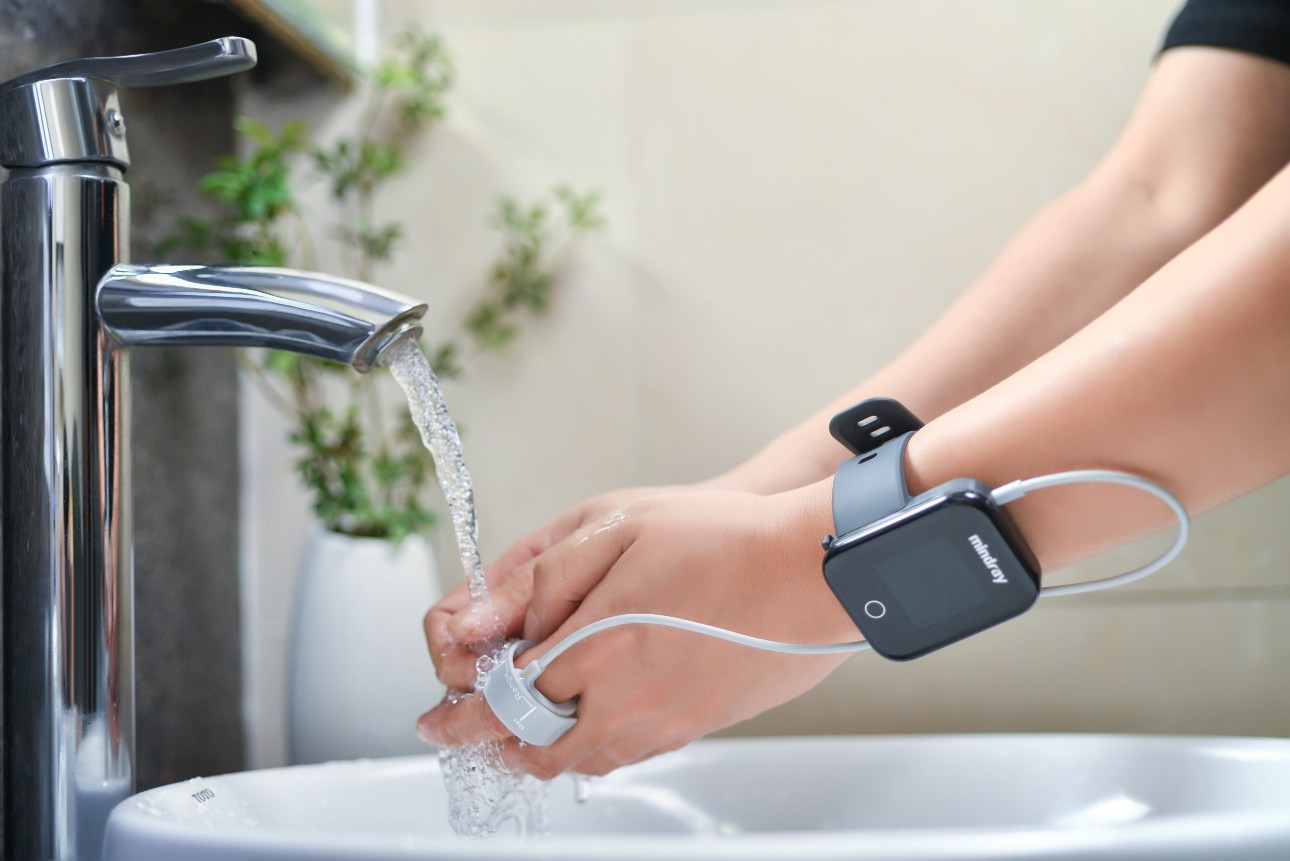
Compared with traditional patient monitors, wearable devices are subject to more motion disturbances, so they need to have a stronger anti-interference ability. mWear™ achieves this end with a state-of-the-art anti-motion solution, which incorporates a dedicated acceleration sensor to collect motion signals. Through advanced fusion analysis of physiological and motion signals, it filters out motion artefacts to minimize false alarms, so clinicians can identify true abnormalities.
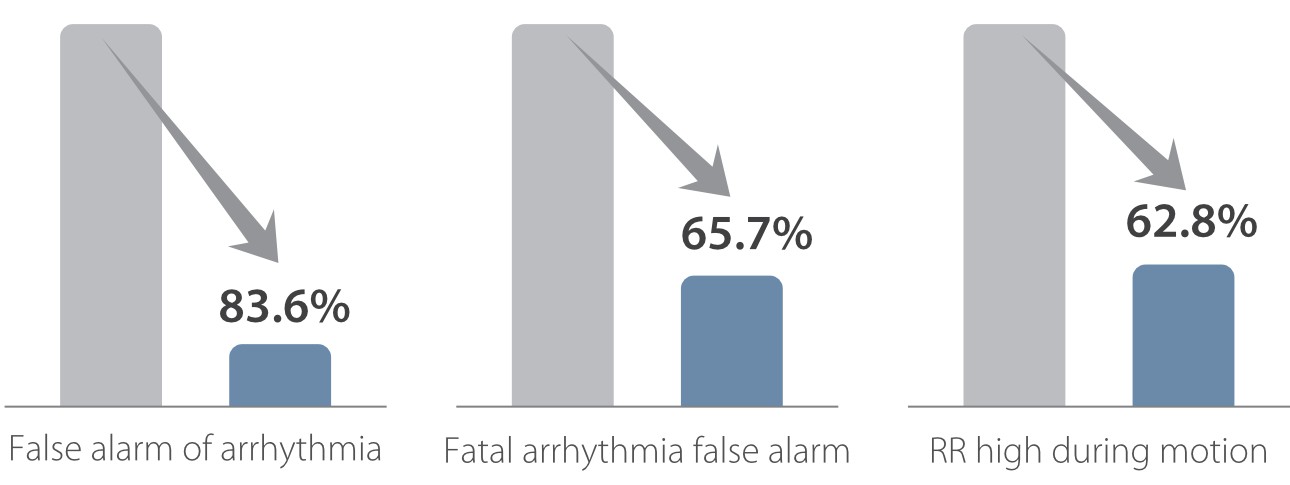
Apart from the measurements of key vital signs, clinicians in traditional bedside checks would ask for information about the patient’s everyday life, such as physical activities and sleep, for a more complete evaluation of his/her status. Such seemingly insignificant information contains hidden clues about the patient's physical and mental health, suggesting how effective the treatment is and how it can be adjusted and improved. mWear™ innovatively incorporates a set of specialized health parameters to reflect patients' physical activities and sleep in real time, allowing caregivers to evaluate patients’ status more completely and objectively.
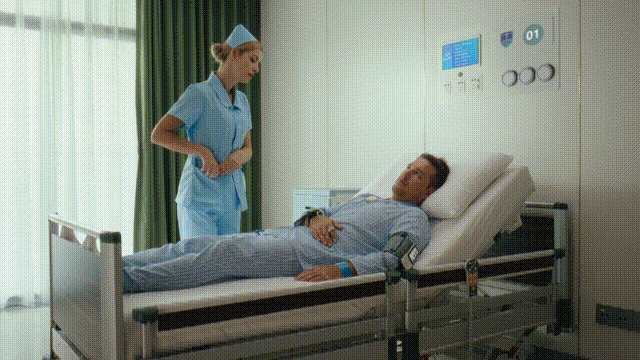
Optimized workflow for a more focused patient care
Despite the improved performance in patient monitoring, there are still concerns about how the wearables may increase nurses' workload due to false positives, bedside review, battery management, and device reconnection. mWear™ has improved the ease of use in every aspect from preparation for monitoring to device management, so it can accommodate different clinical needs with a streamlined workflow and higher work efficiency.
All mWear™ modules can be paired with a single touch and patient information can be bound with quick PDA scanning. This enables the clinicians to manage and view all the information through a central station, which is designed with multi-bed/single-bed screens highlighting key vital signs and alerts. The clinically tested Early Warning Scoring (EWS) has also been integrated into the CMS dashboard, allowing clinicians to understand the patient’s status at a glance and alerting them to intervene accordingly.
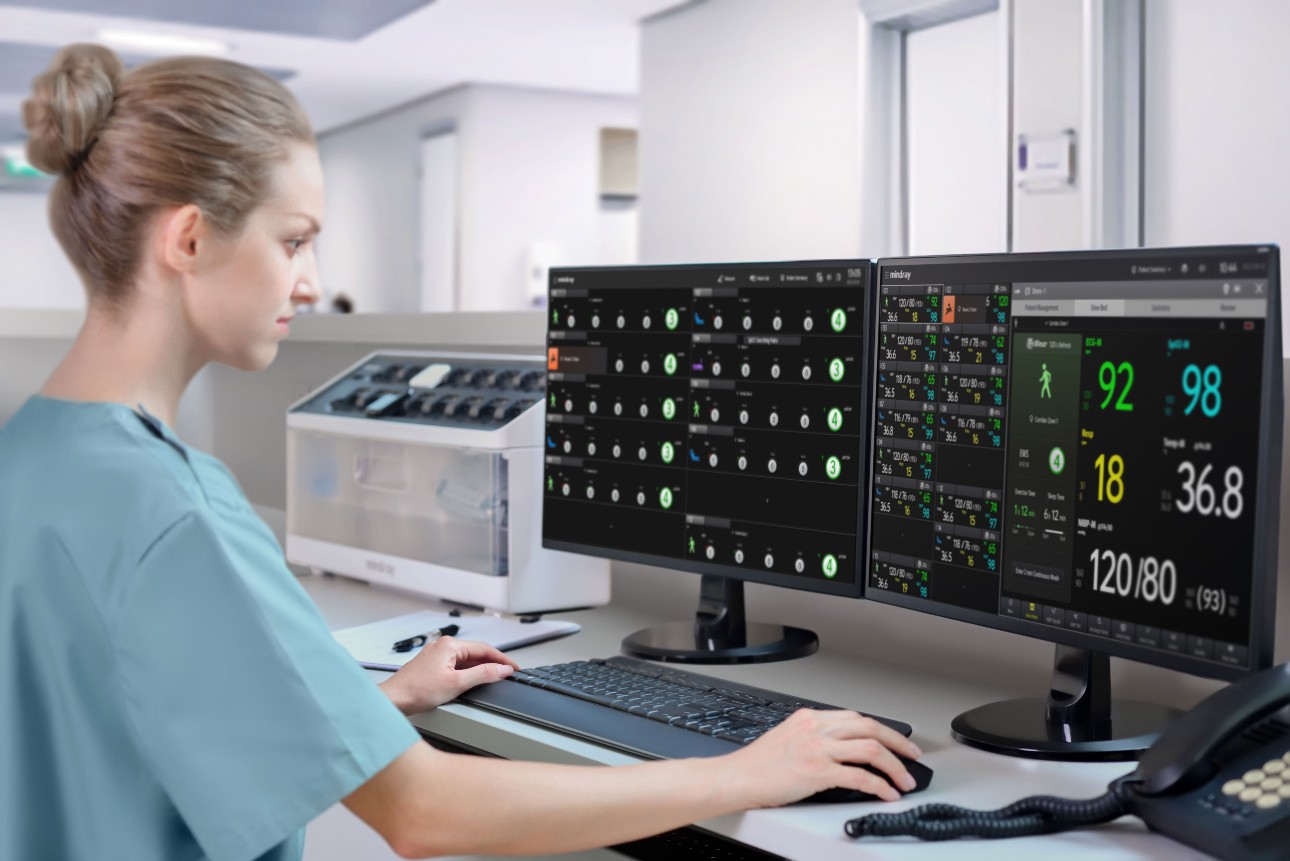
For pre-charged wearable patient monitors, balancing patient monitoring continuity and device durability is a new topic. mWear™ offers an innovative and combined solution that abstracts nurses’ routine work into two interchangeable modes – the Wearable Mode and the Continuous Mode. The Wearable Mode updates the patient’s status every 2 minutes to help nurses keep an eye on high-demand general wards. Identification of abnormal fatal signs triggers Continuous Mode automatically to refresh the patient’s data every second so that nurses can intervene early to better ensure patient safety. The dual-mode design also enables the battery to last for more than 48 hours, which is a great benefit for both patients and nurses.
Unlock more possibilities for home-hospital
As the world’s older population continues to grow, the demand for home-based care is increasing. This trend has grown more pronounced since the COVID-19 pandemic, which has exacerbated the ongoing shortage of medical resources. Against this backdrop, mWear™ is designed to not only support in-hospital patient monitoring but also help the hospital to extend the care service seamlessly to the patient's home via the dedicated mWear Home-hospital App.

With the ability to provide continuous medical-grade monitoring for patients at home, mWear™ takes patient monitoring to a level that will create a more promising hospital-at-home setting. By collecting and sending all patient data back to the central station in the hospital, the system provides clinicians with a unified platform and a consistent workflow to remotely monitor patients' conditions and intervene promptly in case of an emergency. This is especially meaningful for the elderly and those living alone.
Reimagine a more complete & flexible patient monitoring ecosystem
Patient monitoring systems, the vital link between clinicians and patients, define in part the evolution of the patient-care ecosystem. mWear™ seeks to revolutionize the traditional patient care ecosystem by further integrating patient-centric concepts into a consistent patient management system that spans the entire patient journey. All patient-related clinical data throughout the healthcare journey can be displayed, analyzed, and reported through the universal CMS platform - which can also be interconnected with 3rd party EMR systems, giving clinicians a complete and up-to-date picture of a patient’s health history.
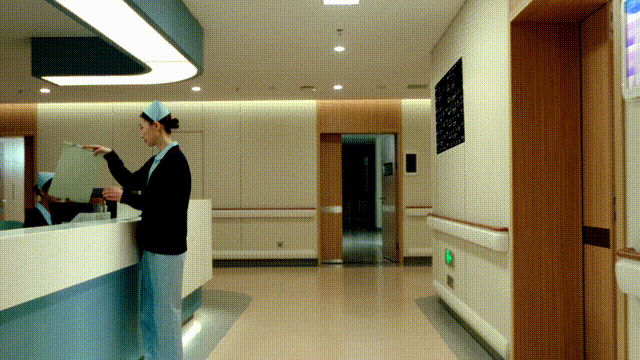
Realizing the unlimited potential of technological innovation in revolutionizing patient care, Mindray will continue to pioneer new possibilities with mWear™ and explore a more connected and integrated patient monitoring ecosystem to care for patients anytime, anywhere.
Reference
[1] CORDIS. Wearable sensors improve care for vulnerable patients. Accessed February 1, 2023. https://cordis.europa.eu/article/id/435820-wearable-sensors-improve-care-for-vulnerable-patients.

